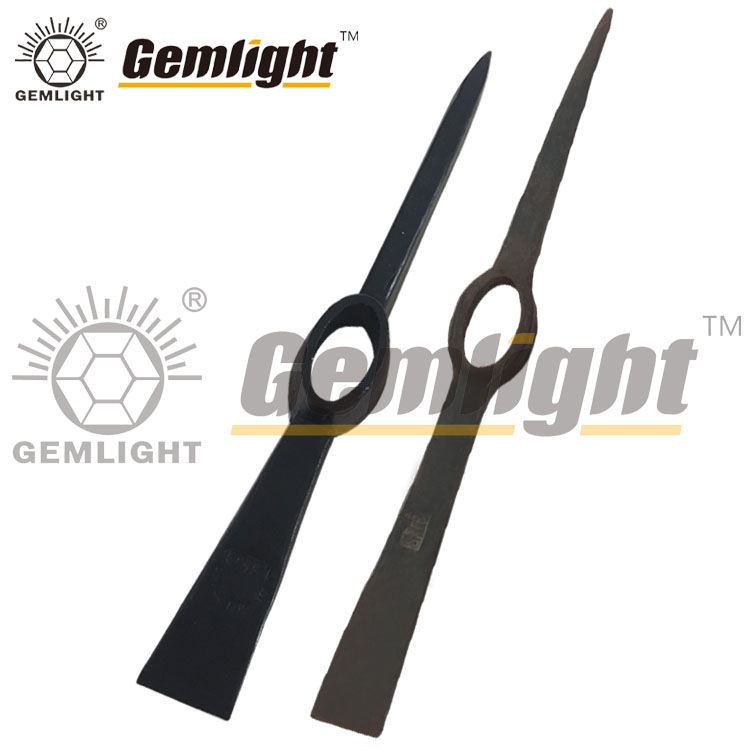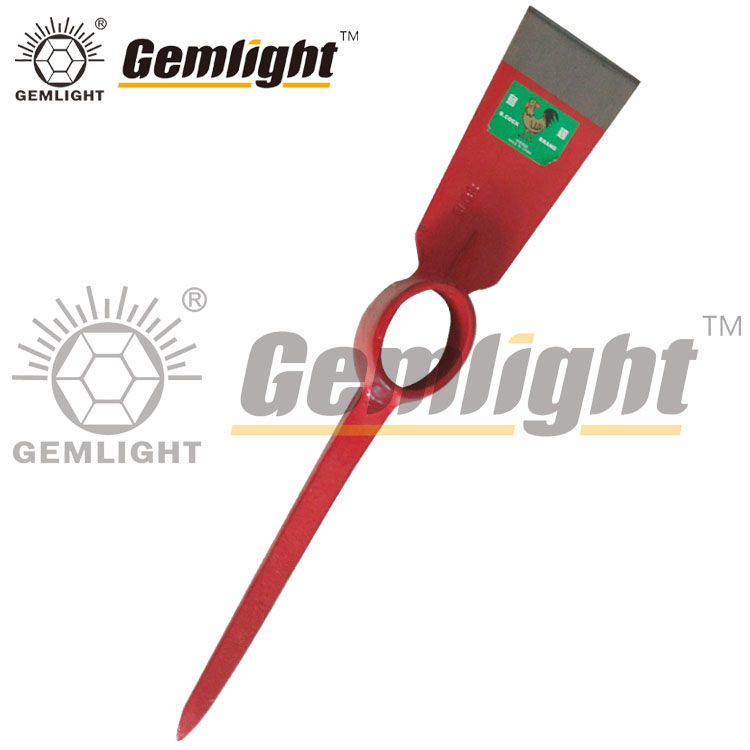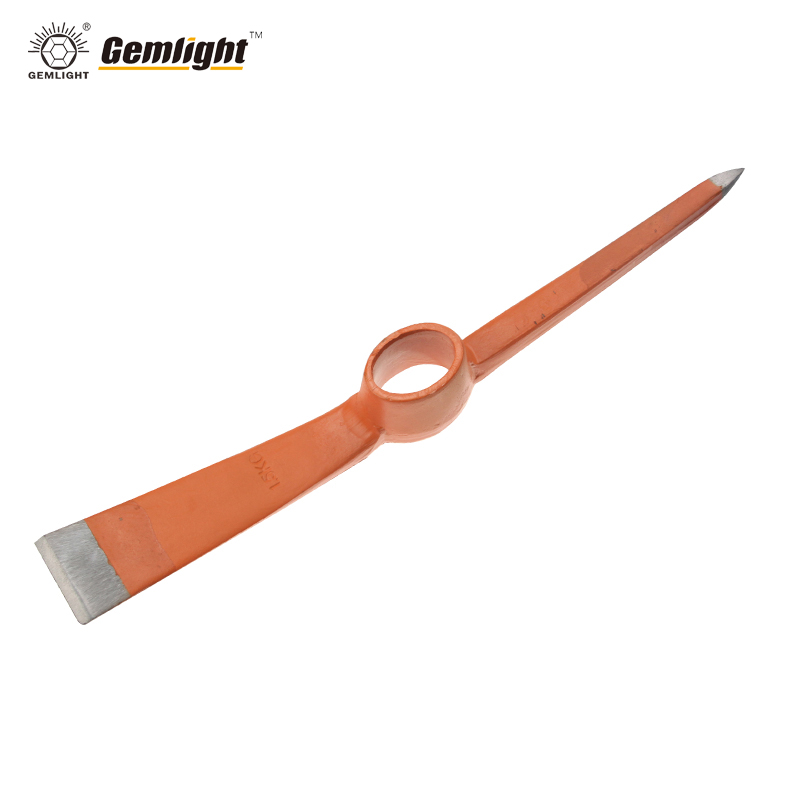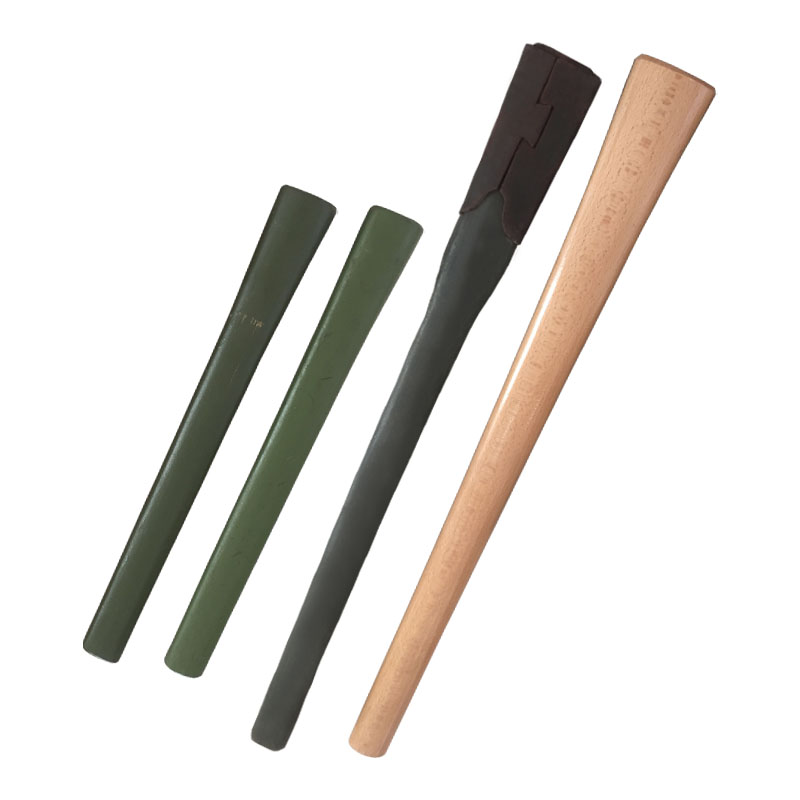News
When it comes to breaking through compacted, dry, or clay-rich soil often found across the African landscape, the classic pointed pick is the best pickaxe for digging. This design, characterized by a sharp pointed end and a durable handle, delivers targeted force, making it especially effective for penetrating hard-packed terrain, uprooting rocks, and initiating trench work.
Many agricultural workers and construction professionals in sub-Saharan Africa favor the pointed pick due to its versatility and ease of use. Whether used for digging post holes in rural fencing projects or preparing land for irrigation ditches, this tool excels under pressure. The pointed tip allows for precision in compacted areas, while the weight balance supports deeper impact with less user fatigue.
For buyers sourcing tools for rural development, infrastructure construction, or agricultural land clearing, the pointed pick is a high-demand product. With forged carbon steel heads and hardwood or fiberglass handles, modern variants are optimized for both durability and comfort. Manufacturers that offer customizable handle lengths and branding options stand out in the wholesale market.
Investing in classic pointed picks as part of your product range not only meets the needs of utility-focused users but also positions your brand as a reliable supplier of essential tools for fieldwork. This is a must-have in any product lineup targeting contractors, farmers, and community development organizations.

The heavy-duty cutter mattock is widely recognized as the best pick axe for breaking rocks in construction and agricultural environments, particularly across rocky and semi-arid regions of Africa. This dual-head tool features a broad, chisel-like blade on one end and a pick or spike on the other, offering both splitting and prying functionality.
Unlike traditional pickaxes, the cutter mattock provides a broader cutting edge, making it highly efficient for removing stones, cutting through roots, and breaking up hardened surfaces like laterite. This tool is frequently used in areas like Kenya's highlands, northern Nigeria, and Ethiopia, where infrastructure development is expanding into more difficult terrains.
Construction teams rely on cutter mattocks for site preparation, especially where manual labor is more cost-effective than mechanized alternatives. The tool’s weight distribution ensures strong impact force, while the extended blade increases the effectiveness per swing, reducing fatigue during prolonged use.
From a sourcing perspective, cutter mattocks made with heat-treated steel heads and shock-resistant handles are in high demand. Distributors can benefit from supplying models with varying head weights and handle materials, including traditional hardwood for rural markets and composite grips for urban or export clients.
Overall, the cutter mattock stands out as a high-performance pick axe option. Its rugged design and multipurpose function make it ideal for hardware retailers, agricultural co-operatives, and NGOs involved in land development projects.

Among the most practical tools for smallholder farmers and gardeners in Africa, the hoe and pick combination tool is the best garden pickaxe tool for daily agricultural use. This hybrid design integrates a wide hoe blade on one side with a narrow pick on the other, offering unmatched versatility in soil cultivation and crop management.
This tool is particularly useful in regions like Uganda, Tanzania, and Ghana, where hand tools remain the backbone of subsistence farming. The hoe side is used for tilling soil, removing weeds, and forming planting beds, while the pick side is ideal for breaking hard ground, uprooting stumps, or digging small irrigation trenches.
From a usability standpoint, the dual-function head reduces the need to switch tools during fieldwork, saving time and labor. Its balanced structure and medium weight make it accessible to both male and female users, including elderly or youth farm workers.
Distributors seeking to cater to agricultural communities should prioritize this combo tool for its practicality and market familiarity. Offering variations with forged steel heads, ergonomic handles, and powder-coated finishes can differentiate your products in a competitive landscape. In areas where customization is valued, engraved branding or localized packaging can further boost sales.
The hoe and pick combo is not only a farming necessity—it’s a tool that supports food security and sustainability in rural communities. For buyers seeking functional, affordable, and durable solutions, this remains a top-selling pickaxe category.

In infrastructure development and community water projects across Africa, trench digging is a common task. The railroad pickaxe, originally designed for rail construction, has become the best pickaxe for digging deep and narrow trenches due to its length, weight, and pointed force.
This tool features a long, narrow head designed to penetrate deep into tough soils, making it highly efficient for creating water channels, laying pipe, or forming drainage systems. It is especially effective in countries like Malawi and Rwanda, where hilly terrain and high rainfall require well-managed water flow.
Compared to standard picks, the railroad variant delivers greater reach and impact. Its narrow tip minimizes soil resistance, allowing workers to work faster with greater precision. The added weight enhances digging performance, especially in layered or rocky soil profiles.
For wholesalers and suppliers, the demand for this pickaxe style is tied to public works and community development initiatives. Stocking heavy-duty versions with fiberglass or anti-slip rubber handles can appeal to government contractors and civil engineering firms. Bulk packaging, multilingual labeling, and after-sales support are added values that can boost your competitiveness.
Whether used by rural cooperatives or urban work crews, the railroad pickaxe is a go-to tool for efficient trench digging. Its specialized design meets a specific but essential need in the African tool market.

For maximum durability and all-terrain performance, the forged all-steel model is the best pick axe for outdoor professionals facing the diverse challenges of the African landscape. This tool is forged from a single piece of high-carbon steel, providing exceptional strength, impact resistance, and longevity.
Unlike wooden or composite-handle tools, the steel pickaxe withstands moisture, extreme temperatures, and high-impact use—making it perfect for environments ranging from savannas to semi-deserts. It is widely used by mining crews, road workers, and land developers operating in regions like Zambia, Namibia, and South Africa.
The sleek design and robust build make it ideal for breaking compact soil, cutting through roots, or clearing rocky terrain. Its streamlined structure also reduces the risk of handle breakage, one of the most common failures in traditional pickaxe for sale
From a business perspective, the forged steel pickaxe represents a premium offering in your product catalog. Targeting professionals, government contractors, and export markets, this tool can be positioned as a high-performance option. Custom branding through laser etching, protective coatings, and rubberized grips can further elevate its market appeal.
Adding forged all-steel pickaxes to your inventory shows a commitment to quality and performance. These tools are built to withstand the rigors of African outdoor work—and they offer your customers a long-term solution with excellent return on investment.

 Sitemap
Sitemap